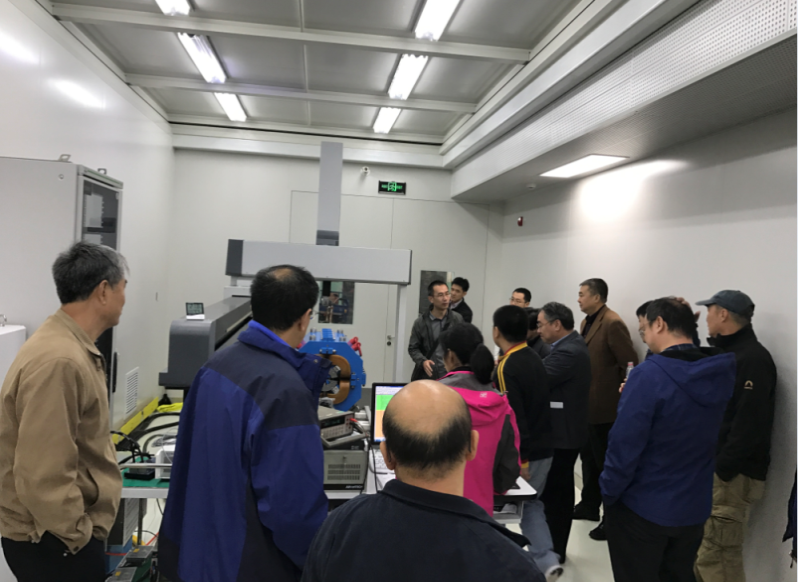Key equipment for the High Energy Photon Source-Test Facility (HEPS-TF) passed technical tests on the morning of October 31st. The successful development of this equipment was an important milestone for the HEPS-TF accelerator magnet system, and lays the foundation for the construction of the upcoming High Energy Photon Source project.
The tested equipment consisted of the ultra-high gradient quadrupole magnet type I, the ultra-high gradient quadrupole magnet performance prototype, the longitudinal gradient electromagnetic dipole magnet, and a rotating coil magnetic field measurement system based on a 3D coordinate-measuring machine.
A review panel heard reports on the design and development of the ultra-high gradient quadrupole magnet type I and other key equipment, and reviewed the test outline. An on-site test was then performed.
The test results showed that, at the operating current of 161.5 A, the central magnetic field gradient of the ultra-high gradient quadrupole magnet type I reached 80.86 T/m, the effective length was 695.6 mm, all the systematic high-order magnetic field components were less than 1×10-4, and all the non-systematic high-order magnetic field components were below 3×10-4.
The review panel concluded that the magnetic properties of the ultra-high gradient quadrupole magnet type I met the design requirements, and its magnetic field performance reached the level of other similar advanced magnets. The ultra-high gradient quadrupole magnet I is a crucial piece of equipment for HEPS-TF. Whether it can be developed successfully determines the feasibility of the overall design of HEPS.
The magnet has a small aperture, high magnetic field gradient, high magnetic field precision, strict boundary conditions, and is extremely difficult to develop. The project team investigated the international development status of small aperture quadrupole magnets, chose the technical solutions reasonably and optimized carefully. The physical design of the magnet was then completed and the development was closely tracked.
After fabrication of the ultra-high gradient quadrupole magnet I was completed, the field measurement result by rotating coil field measurement system showed that the high order magnetic field component was much larger than the specifications. The project team invented the new technique, now under reviewing for patent, of installing “magic fingers” at the end of the magnet to adjust the magnetic field. They could then successfully adjust and optimize the magnetic field quality.
It is extremely difficult to achieve both ultra-high field gradient and ultra-high field precision in a quadrupole magnet. The magic finger technology can quickly and effectively adjust the high order magnetic field components of multipole magnets, making the mass production of quadrupole magnets with ultra-high field gradient and ultra-high field precision possible.

On-site test for the ultra-high gradient quadrupole magnet type I (Image by IHEP)
